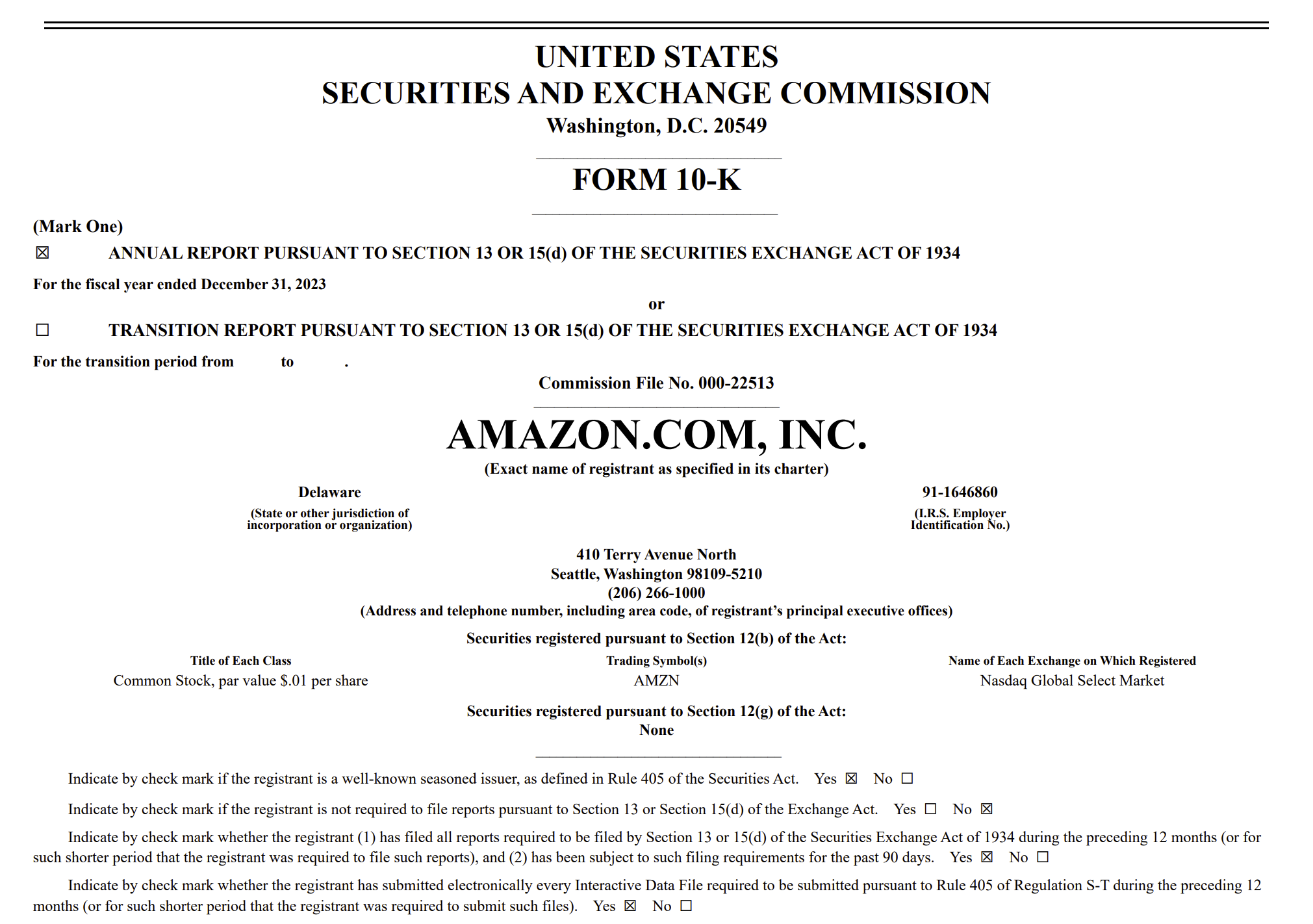📋 What You’ll Learn
-
What is a Form 10‑K?
-
Why it matters for investors and businesses
-
Core sections of the 10‑K explained
-
Filing deadlines & regulatory background
-
Real-world examples
-
Key statistics and noteworthy tips
-
How to read a 10‑K effectively
-
Practical takeaways for users
-
FAQs
-
Strong conclusion & CTA
1. What is a Form 10‑K?
A Form 10‑K is an annual report publicly traded U.S. companies must file with the SEC. It provides a comprehensive breakdown of a company's financial performance, business model, risks, management narrative, and audited financial statements
🔑 Key highlights include:
-
Business overview & history
-
Risk factors
-
Management’s Discussion & Analysis (MD&A)
-
Detailed financial statements
-
Executive finance certifications
2. Why Does the 10‑K Matter?
-
Investor confidence: Investors rely on it to make informed decisions.
-
Regulatory compliance: It's mandatory under the Securities Exchange Act .
-
Transparency: It's more detailed and formal than a marketing-style annual report
-
Risk assessment: Helps uncover hidden liabilities or legal issues .
⚠️ Noncompliance can result in fines, penalties, and dropped trust .
3. Key Sections of the 10‑K
Understanding the parts makes reading it far easier:
Part I
-
Item 1 – Business: Company’s operations, subsidiaries, markets
-
Item 1A – Risk Factors: The top risks listed by importance
-
Item 1B – Unresolved Staff Comments: Flags from the SEC
-
Item 2 – Properties: Physical assets owned
-
Item 3 – Legal Proceedings: Major lawsuits or regulatory actions
-
Item 4 – Mine Safety (if applicable)
Part II
7. Item 5 – Market & Ownership: Stock stats, dividends, repurchases
8. Item 6 – Selected Financial Data: 5-year snapshot
9. Item 7 – MD&A: Management explains performance
10. Item 7A – Market Risks: e.g., interest rates, currency exposure
11. Item 8 – Audited Financials: Balance sheet, cash flow, income, auditor opinion
12. Item 9-9B: Accounting changes, internal controls
Part III
13. Governance: Directors, execs, compensation, ownership
Part IV
14. Item 15: Exhibits, schedules, signatures
4. Filing Deadlines & Regulatory Background
Deadlines depend on company size under Regulation S‑K :
| Filer Type | Deadline After FY-End |
|---|---|
| Large accelerated (> $700M float) | 60 days |
| Accelerated ($75–700M) | 75 days |
| Non-accelerated (< $75M) | 90 days |
Filed via EDGAR, verified by CEO/CFO signature
5. Real-World Examples
Example 1: Company X
In Item 1A, Company X warns that 30% of suppliers are overseas—highlighting supply chain risk.
Example 2: Company Y
MD&A reveals rising energy costs as a major factor cutting profit margins YoY—useful intel for investors comparing peers.
6. Statistics & Practical Tips
-
📝 90% of investors use the 10‑K for due diligence
-
🧮 Typical 10‑K has 150–300 pages, heavy on financial tables
-
Legal and footnotes often reveal hidden debt, lease obligations, and accounting choices
-
Footnotes help compare GAAP vs. actual accounting methods
🧠 Tip: Start with Risk Factors, then MD&A, then financials and footnotes.
7. How to Effectively Read a 10‑K
-
Quick scan: Cover, signature, table of contents
-
Risks: What could go wrong?
-
MD&A: Understand the story behind numbers
-
Financials: Compare trends—revenue, profit, cash flow
-
Footnotes: Focus on debt, leases, legal liabilities
-
Governance: Execs and compensation
-
Glossary: Understand technical terms
8. Practical Takeaways for You
-
Ideal for investors, analysts, and trend analysts
-
Helps spot red flags like rising debt, shrinking margins
-
Adds rigor to comparing competitors
-
Improves strategic alignment by showing stated business goals
-
Non-finance readers can still gain from the overview and risk narratives
9. FAQs
Q1: How does a 10‑K differ from an annual report?
10‑Ks are long, formal SEC filings. Annual reports tend to be design-heavy and promotional
Q2: Where to find a company’s 10‑K?
Check the Investor Relations section or use the SEC’s EDGAR search.
Q3: Can I rely on only the 10‑K to invest?
It's great for fundamentals but pair it with current news, 10‑Q, and 8‑K filings.
Q4: What if I find technical terms confusing?
Use glossaries, SEC’s guides, or tools like ChatGPT to decode jargon.
Q5: What if a company delays filing?
Expect penalties, declines in investor trust, or stock price drops.
10. Conclusion
Form 10‑K is your annual roadmap to a public company’s strategy, financial health, and risks. Though dense, it’s invaluable for anyone serious about investing or corporate analysis. With the right approach—focus, structure, and patience—you can turn it into a powerful decision-making tool.
Ready for Hands-On Help?
Unlock early benefits by grabbing 10‑Ks from top companies. Compare them, note differences, and sharpen your analysis.
✅ Call to Action
Unlock expert help with preparing and filing your own reports. Reach out to Manika Fintax Solutions for professional paid support!
Keywords included: "Form 10‑K", "10‑K report", "how to read 10‑K", "10‑K filing deadline", "risk factors", "MD&A", "SEC 10‑K", "10‑K examples", "financial statements", "10‑K guide".



Post a Comment
0Comments